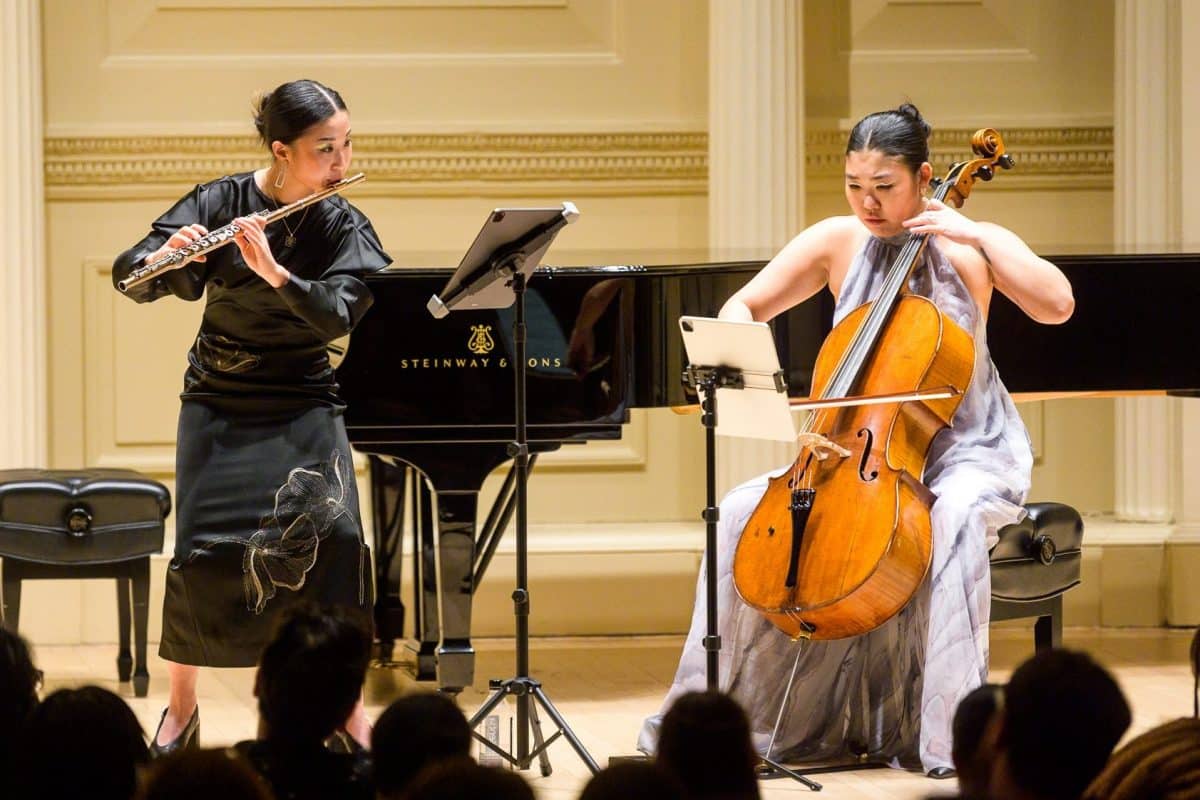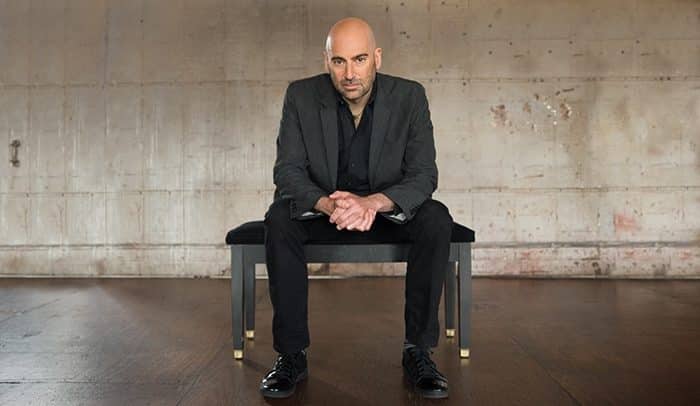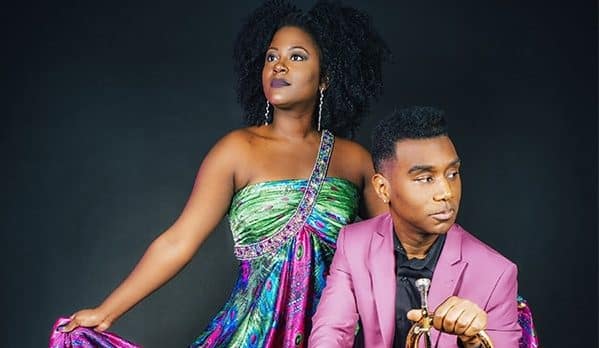Meet the Grantees: KOE 聲
One of CMA's 2023 Artistic Project grantees, flute-and-cello duo KOE stays busy commissioning new work

When a promising trio’s pianist decided it was time to pursue other opportunities, cellist Emma Kato and flutist Eva Ding doubled down, deciding to continue their chamber collaboration and tackle their endeavor as a duo. Enter: KOE 聲.
Looking for additional guidance on this journey, Kato and Ding applied for and received a 2021 CMA Ensemble Forward grant. Two years later, KOE also received a 2023 CMA Artistic Projects grant, funded by the Howard Gilman Foundation. With this support, KOE will present an hourlong, interdisciplinary performance, which will include a new composition by Corey Chang.
In time for the application period for the 2024 Artistic Projects grant program, CMA staffer Ben Schonhorn caught up with Eva Ding to hear more about KOE’s journey, mission, and experience as a CMA grantee.
CMA: What does the word “KOE” mean?
ED: It’s the Japanese word for “voice,” “noise,” and “sound.” We realized that the kanji for the word in Japanese is the exact same character in Chinese; and as I am Chinese-Kiwi and my ensemble partner is Japanese-American, it felt like it was meant to be!
CMA: Since then, what has been one of your biggest challenges?
ED: Finding good repertoire. There isn’t much canonical flute-cello duo music, but that challenge offers us a chance to arrange and commission new works and make meaningful connections with living composers and composers of Asian heritage. So it’s an invigorating challenge.
CMA: Who would you say has been most influential to your journey, both as a solo artist and as an ensemble?
ED: Every single teacher and mentor has been instrumental (excuse the pun) in one way or another to my development as a flutist, musician, and human being. My undergraduate professor, Uwe Grodd, instilled a singular love for the flute, while to my graduate teacher, Robert Langevin, who drilled technique, made me the player that I am. And I have to credit all the incredible, strong female role models, like Hyeyung Sol Yoon and Eunbi Kim, as well as our dear ensemble coach Zara Lawler, who backed us even when we weren’t sure of our own way and offered so much support.

CMA: What inspires your performances’ aesthetic?
ED: So many things! Often that inspiration comes from the most unexpected of places, like a fascinating speakeasy or captivating immersive theater show. Being in New York is often inspiration in and of itself.
CMA: What advice do you have for ensembles applying for CMA grants?
ED: Just do it. Not to be cheesy, but if you don’t apply, then it’s an automatic “no.” You never know who on the panel might be touched by your story or by your project. And unless those details get in front of them, they’ll never know…and you’ll never know.
CMA: Can you share a bit about the project supported by CMA’s Artistic Projects?
ED: We’re working with new media artist Xuan and choreographer Eric Trope to present a multimedia chamber music performance with dancers. The one–hour show, which will feature works by Lei Liang; Zhou Long; and a new work for flute, cello, and percussion by Corey Chang, will be based on a set of letters between a wife—waiting in Hong Kong to immigrate to America—and her husband, who is already there. At the work’s core are themes of longing, distance, and home, as the husband tries send money to his wife to buy rice. Because what is love in an immigrant household but making sure that the ones you love are well-fed?
CMA: Speaking of food, here’s a silly question to end our chat. If KOE were a sandwich, which kind would you be?
ED: It’d have to be a lobster roll cause it’s one of our faves, and y’know—she’s a lil fancy.
To stay up–to–date with KOE, check out their Instagram @koeduo or their website: koeduo.com.
Learn more about the 2024 Artistic Projects program here.



